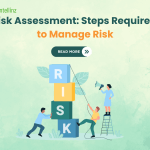Investing smartly with a Small Budget.
If you would like to invest but think you don’t have the money, think again. For a lot of people, to simply get started at investing it requires you to have a lot of money. In reality, the process of building a solid portfolio can begin with a few thousand—or even a few hundred—dollars. The amazing thing about investing is the advantage of not requiring a large down payment, unlike buying a car or even a house. However, most people realize that paying yourself first is easier said than done.
The key to building wealth begins with developing good habits—like regularly saving as much money every month. Swap out the expensive cappuccinos for hawker Centre coffee at home and you could already be saving more than $50 a month.
Once you have a little money to play with, you can start to invest with as little starting funds. Here’s how…
Save Diligently
The diligence to dependably set aside a certain amount in savings every month will reap rewards in the long run. Luckily, in today’s modern technological era, if you lack the willpower or organization to do it alone, help is available via various smartphone apps such as Mint, BillTracker or Ibotta.
One of the things you need to have—other than money—is consistency. Start by making a budget and setting your goals. Putting everything down on paper and visualizing it can help keep you on track and prioritize.
Once you have your budget and savings plan down, it’s time to start finding other sources of income.
Find other sources of income
Deep down we all know money cannot buy happiness but at the end of the day, we all need money to survive and thrive in life. If you are looking for ways to create multiple streams of income, here are a few ideas that might help you.
· Leverage your skillset
If you have years of experience in a particular skill, you can start to offer tuition services or courses to help people prepare for competitive exams or learn new skills related to your field.
· Start a carpool service
If you have a car and some extra time on your hands, it might be a good idea to get in to the service of carpooling with services such as Grab, Ryde or Gojek. It’s a great way to earn extra income with your vehicular asset.
· Start a side hustle
If you have a home business, getting in touch with your entrepreneurial side for some extra cash is not a bad idea. You just need to figure out what you are good at, identify how you can monetize it and start the project you are passionate about.
Now that you have your savings plan and stable income plan set, it’s time to take a look at some of the ways you can start investing on a small budget:
Exchange-Traded Funds (ETFs)
ETFs (exchange-traded funds) are mutual funds that trade on stock exchanges. Since many of them are structured to closely resemble an index, they are not actively managed, making them low-cost investments.
Others concentrate on a specific industry, such as finance or technology. ETFs are a good place to start if you don’t know where to spend your money. They have automatic diversification, ensuring that your eggs are not all in one basket.
However, some ETFs charge a fee for each exchange, which can be prohibitively expensive for small investors. Others don’t charge commissions, making them a safer option for small investments. Fees are charged by all funds, so make sure you know how much your investment will cost you.
Online Investment Platform
Diversification is important for reducing risk, but you don’t want to settle for poor returns — and you definitely don’t want fees and taxes to eat into your returns. An online platform will assist you in making financial decisions.
You should specify whether you’re putting money aside for a rainy day, a big investment, retirement, or just investing in general.
There are many platforms that uses low-cost index funds, and you can set up automatic monthly investments of a small sum. Be sure to research first on the right online investment platform suited for you
Diversify Your Holdings
When it comes to diversification, it’s crucial to have a variety of investments, but keep an eye on your overall portfolio. You will have assets in various areas, so consider the big picture when determining whether you’re properly diversified. Since some of your positions will fall as others grow, a well-diversified portfolio will be able to weather market fluctuations better.
When bond prices fall, for example, stock prices sometimes — but not always — rise, and vice versa. If one of these markets experiences a sharp decline, having some stocks and bonds in your portfolio will cover you.
Assets, shares, and cash are the three asset groups you can diversify through. If you’re familiar with real estate or commodities, you may want to include them as well. Since stocks are such a wide category, you can diversify by size and form.
You can diversify the bond portfolio by purchasing corporate, municipal, and Treasury bonds. The best asset combination for you will be decided by how much risk you are willing to take and how long you expect to keep your money invested.
Conclusion
Investing can be complex, but the fundamentals are easy. Maximize your savings as well as lower your expenses. Make wise decisions for the capital you have. However, putting together a portfolio can be complicated, particularly when balancing the risk of such assets against their potential returns.
If you are not confident to get started on your own, it’s always best to seek advise from veteran investors that you know from networking groups or peers that you trust. Investing is hard when you just started, but the more you do it, the more money you might earn.






